David Royer, noted microphone designer and creator of the made-in-USA, high-end Royer ribbon microphone line, has created a line of home-studio priced microphones with professional-grade specifications — Mojave Audio. And from the Mojave line, the new MA-101fet is one of the most remarkable instrument microphones I have used in the past forty-five years!
In all those years, my mic cabinet has included numerous high-end, small-diaphragm microphone — and many of the large diaphragm microphoness as well. These new Mojave mics, however, defy the “small diaphragm vs. large diaphragm” microphone character paradigms. (Check out my sidebar on small diaphragm mic evolution at the end of this review.)
Features
When I first unpacked my pair of Mojave MA-101fet microphones (retail priced at $600 each), I was immediately surprised by their “beefiness.” These are not exactly little “pencil” mics like Schoeps CMCs or Neumann KMs; they are closer in size to the Sony ECM-33Ps, from 1974, but weigh substantially more. Their exact dimensions are difficult to quantify, since the capsule end is considerably narrower than the cable connector end, but suffice it to say that they are 6.75-inches long, 1.12 inches wide at the wide end, and weigh half a pound each.
The size is primarily due to the fact that Mojave has fitted a high-quality Jensen output transformer; it’s heavier and simply takes up more space than the little “peanut” transformers in other small diaphragm mics. The internal circuitry of this microphone is first class in all respects. All components were chosen for their sonic attributes, and the fact that this solid-state microphone sports an output transformer (it could just as easily been designed with a transformerless line driver), reflects the truism that all classic microphones have output transformers.
According to Mojave, the MA-101fet is a small (I call it medium) diaphragm, solid-state condenser microphone with interchangeable cardioid and omnidirectional capsules. It combines the features of two of Mojave Audio's popular models — the cardioid and omnidirectional capsules from the vacuum tube MA-100 — with the electronics from their large diaphragm MA-201fet.
When I soloed the violins, my mouth dropped open! The two Mojaves sounded like a high-resolution stereo mic — not at all like a pair of typical “pencil” mics put together into an X-Y arrangement. The imaging was rock-solid and, most importantly, the sound of the violin was extremely smooth and true.
The MA-101fet also features an internally switchable -15 dB pad (you have to open up the mic — an easy, if slightly inconvenient, operation — to access it), increasing its sound pressure level capability to 135 dB SPL. This makes the MA-101fet suitable for almost any source — from capturing the subtle nuances of acoustic instruments to the loudest of electric guitars and drums.
The mic features hand-selected, 3-micron cardioid and omni capsules, a high-quality Jensen audio transformer and military-grade FET and custom-designed, low-noise resistors. Each MA-101fet microphone — which is assembled in China with these special components — is tested and evaluated back at Mojave headquarters, and then packaged in its cute little metal suitcase.
The audition
For a high-resolution, classical project at my home recording studio, I needed to spot mic a classical violinist in a violin/piano recording. I used the Mojaves as an “X-Y coincident” pair of cardioids.
Since I needed a stereo bar for this arrangement, I used one of my own, as Mojave supplied the mics as two self-contained packages with only a single mic stand attachment for each mic. For mounting the mics for this session, I used a stereo bar that came with my pair of M-Audio Pulsar IIs, and it worked perfectly with the Mojaves. (M-Audio had even included a little threaded extension adapter, which enabled me to mount one mic over the other. Contrary to many published snapshots purporting to demonstrate X-Y mic placement, in which the two mics are simply placed “capsule to capsule, but at an angle,” that is not true X-Y! Rather, the capsules need to be mounted one above and one below each other, and then angled, just as they would be if they were mounted in a dedicated stereo mic, such as a Neumann SM-23, SM-69, or AKG C-24.
My setup for the 24-bit/192 kHz multitrack recording included the Merging Technology Pyramix recording/editing software via Mac Pro computer, and Crane Song Flamingo mixer/preamps. The Mojaves were placed near the violin and a pair of Telefunken M-260s were placed near the piano. I also set up two spaced pair of 3-micron Stephen Paul-modified Neumann M-249s to pick up the overall room sound of the two instruments.
When I soloed the violins, my mouth dropped open! The two Mojaves sounded like a high-resolution stereo mic — not at all like a pair of typical “pencil” mics put together into an X-Y arrangement. The imaging was rock-solid and, most importantly, the sound of the violin was extremely smooth and true.
When the violinist stopped playing, I could hear the Mojaves picking up the piano. Even though they were positioned away from the piano, I was astonished at how equally smooth they sounded. The ‘101fets’ off-axis response was definitely smooth and the low frequencies did not sound anything like I would have expected from, say, a cardioid Schoeps; the Mojaves were solid and very present. **Never had I experienced such well-balanced, high-resolution sound from a factory-made, small diaphragm microphone! If I had known in advance how good they were, I might very well have used the two Mojave mics as the sole pickups for this violin/piano recording.
Later, I tried the Mojaves with their omnidirectional capsules and, again, they sounded wonderful. Their pickup of the good-sounding room was very faithful and warm in nature. I moved them in appropriately, and got a great bloom around the instruments in the string quartet I was recording.
I subsequently tried them on piano, choir, and organ, and each time came away with the feeling that these relatively low-priced mics can easily substitute for many of my custom-modified vintage microphones. They seem not to have any of the “solid-state sound” that I find objectionable in other, considerably more expensive, small diaphragm European microphones.
I subsequently tried them on piano, choir, and organ, and each time came away with the feeling that these relatively low-priced mics can easily substitute for many of my custom-modified vintage microphones. They seem not to have any of the “solid-state sound” that I find objectionable in other, considerably more expensive, small diaphragm European microphones.
David Royer did it right with this microphone. Take noise floor, for instance. The specs (14 dB self-noise) are good, but not outstanding. But microphone designers know that one can trade off a few decibels of S/N — one way or the other — by the way one voices the tensioning of the diaphragm. Adding more tension to a diaphragm usually lowers its sensitivity and results in more self noise. Reducing the tension raises the sensitivity and lowers self noise a bit. (self noise also is created by the electronics.)
Mr. Royer said that diaphragm tensioning involves a number of factors to achieve optimum microphone performance: "There is a fussy game going on that involves manipulating the tension and spacing between the diaphragm and backplate, as well as the stiffness of the air pocket trapped behind the diaphragm," he explained. All that fuss, of course, is why the Mojave MA-101fet sounds so good.
The verdict
So, how should I summarize my findings? This is one of the best “small-diaphragm” solid-state condenser mics I have ever used. For the price, the mic is an incredible performer. No, the stereo pair does not have the “reach” of my 1-micron Stephen Paul-modified Neumann KM-54s, or even of my Royer SF-24 active stereo ribbon mic, but one of those microphones cost much more than a pair of Mojave MA-101fets.
The Mojave's forte is to pick up sound faithfully — both on and off axis — with no undue emphasis or lacking in any part of the frequency spectrum except, perhaps, a bit of a broad peak around 5 kHz. And the low frequencies are definitely there, much better than any small diaphragm directional mic I’ve ever used. David Royer’s use of that huge Jensen transformer, which lets all the low frequencies picked up by the high-resolution, small diaphragms come through, is definitely a winning combination!
My only negatives are the lack of a stereo bar with a pair purchase and no hypercardioid capsule option. Maybe Mojave will add the latter feature in the near future, hint-hint. In a nutshell, the Mojave MA-101fet is so good that I see it as a completely viable, lower-cost alternative to the often-used, high-end German microphones — for any type of music.
Although there are numerous, cheaper-priced instrument microphones sourced from China these days, David Royer’s high-quality, thoughtful design with high-grade parts makes the Mojave line a cut above the others. Hence, they cost a bit more money. But in my world of European-pedigree, multi-thousand dollar microphones, $600 for a mic this good is a bargain. I also recommend the microphone for an Everything Audio Network Stellar Sound Award.
Dr. Fred is an avid audiophile and has been a classical recording engineer for the past 35 years, working on hundreds of recordings released on more than a dozen labels, including Musical Heritage Society and Dorian. His studio, Dufay Digital Music, is located in Massachusetts. He holds a Yale Ph.D. in Music Theory and is also an avid keyboardist, currently performing as a weekend jazz pianist, as well as a church organist and choir director. He can be reached via the Everything Audio Network, everything.audio@verizon.net
EAN Extra!
The Evolution of Small Diaphragm Microphones
Back in the day, the most widely used small diaphragm microphones were made in Germany and Austria by Neumann, Schoeps, and AKG. They had approximately 1/2”-diameter diaphragms and, due to various proprietary capsule manufacturing techniques and amplifier designs, sounded quite different from each other.
All three companies made vacuum tube models in the 1950s and early 1960s, and all eventually switched to solid-state amplifiers, which changed their sound somewhat. Nonetheless, there were still several sonic qualities common to all of them.
First, due to their small diameter diaphragms, their response to sound arriving indirectly at the diaphragm’s axis was almost as linear as the direct response — only lower in amplitude. Second, the cardioid and hypercardioid capsules could always be expected to be deficient in low frequency response, below about 150 Hz. The omnidirectional diaphragms — which responded to pure pressure variations — were flat all the way down to at least 30 Hz.
Due to these seemingly unavoidable characteristics of small diaphragm microphones, certain recording techniques evolved for taking advantage of their strengths, while avoiding their weaknesses. For example, the use of three small diaphragm omnidirectional Schoeps vacuum tube microphones, spaced across the front of an orchestra, became the standard for audiophile recordings in the fifties and sixties, as pioneered by the Mercury Living Presence LPs produced by the late Bob and Wilma Fine.
This technique was continued into the present digital era by Telarc. When a more precise stereo image was desired for chamber music recordings, coincident cardioid small diaphragm mics were used because their fine off-axis response complemented this technique; a little bass boost from a high-quality equalizer usually fixed the low end problem sufficiently.
The large (approximately 1”) diaphragm condenser microphones (from Neumann and AKG) had much better low frequency response, but terrible off-axis response. So different uses evolved for them — as spot microphones for vocalists (where their euphonic colorations and proximity effect when used as cardioids were deemed favorable) and, in general, for most multi-microphone situations in pop and jazz music recording.
There actually existed an in-between-sized, 3/4-inch diaphragm mic — the vacuum tube Sony C-37 (and its descendants, whose 3/4” diaphragm capsules constituted basically the entire Sony electret line, such as the ECM-22 and 33P), but it was rather noisy. Although it had its champions, the C-37 wasn’t used nearly as widely as the German and Austrian mics, and certainly not for classical music recording.
And let's no forget Western Electric and Altec. The Western Electric 640A predated the Schoeps mics by more than a decade; The Altec M-29 capsule was shared with AKG (C-28, C-60 and C-61).
Microphone capsule and diaphragm research and development, however, did not stop during the sixties. Throughout the 1970s and 1980s, modern mic pioneers — among them the late Stephen Paul and David Royer — experimented with different diaphragm material and thickness, and by the mid-eighties, Stephen Paul became the first person to produce large diaphragm capsules made of, initially, 3-micron thin gold-sputtered Mylar, and later, 1.5-, 1-, and 0.9-micron Mylar. These new diaphragm materials produced mics which exhibited far better transient and off-axis response than the older 6-10 micron PVC.
Stephen Paul also produced 1/2”-diaphragms with 3- and 1-micron Mylar, which showed analogously improved characteristics. I own more than a dozen of his modified Neumann and AKG vacuum tube microphones — both large and small diaphragm models — and can personally attest to their high resolution and superb sound pickup qualities.
When American vacuum tube importer and microphone manufacturer, Aspen Pittman (Groove Tubes) was exploring the possibility of outsourcing capsule manufacturing to China in the 1990s, he specified a 3/4”-diaphragm — in an attempt to improve the typical falling low-end response of small diaphragm microphones. He told me he was trying to build a vacuum tube microphone that “sounded like a Neumann KM 54, only better.”
In the low-frequency domain, this capsule was a success, but its 6-micron thickness, and early Chinese electronic design still exhibited uneven off-axis response. Thus, the GT-40 and its various successors were still not suited for coincident miking, despite their smooth, warm, and large sound.
But progress continued, and that Chinese manufacturer went on to make newer versions of this capsule for other companies, including M-Audio, in the form of their Pulsar, Aries, and Pulsar II. These were improvements upon the GT-C1 cardioid capsule, but it remained 6 microns thick, and still rather “slow” sounding, with not much better off-axis response. And the amplifiers were nothing special.
David Royer, however, came upon the perfect solution that solved all the aforementioned problems of transient and off-axis response, and designed a new capsule for the latest version of this evolving microphone. He instructed the Chinese lab to skin a variation of their 3/4”-capsule with 3 micron Mylar, à la Stephen Paul, properly sputtered with gold. This design is the heart of the Mojave MA-101fet microphone.
—Dr. Frederick J. Bashour








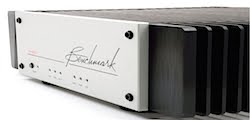


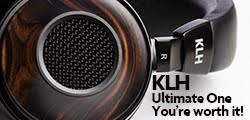
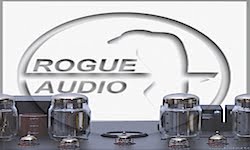




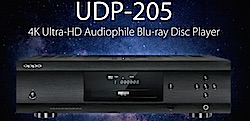


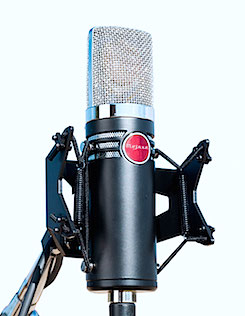

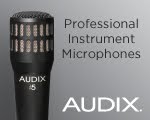









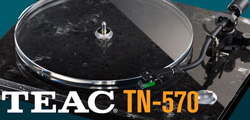





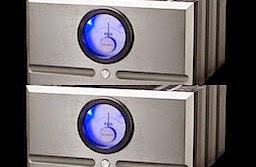








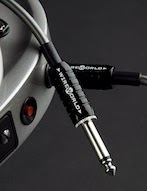

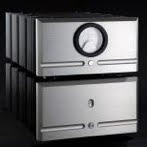









No comments:
Post a Comment